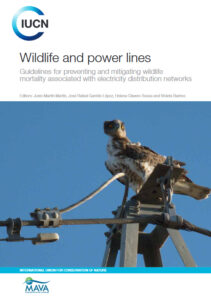Given the vital role of power lines for social development, the rapid spread of such infrastructure worldwide and the fact that power lines can be one of the main causes of direct mortality for several species of birds and other wildlife, including mammals, it is essential to have suitable tools to ensure that these lines are built and maintained in accordance with environmentally friendly principles, and that priority is given to avoiding and reducing negative impacts.

The newly published manual is intended to be a technical guide for use by all stakeholders, from companies and businesses in the energy sector to authorities and government planners, investors and civil society. It contains recommendations and standard good practices for avoiding the potential adverse effects of new power lines and managing risks early in the process, so as to ensure that infrastructure expansion takes account of biodiversity in the spatial planning and early project implementation phases, when they will be most effective. In the case of existing dangerous and poorly designed power lines, the negative impacts that they may be generating must be analysed and addressed promptly; these guidelines also provide information on the best technical solutions available.
The publication also includes a round-up of the current state of affairs and practical solutions that have been shown to significantly reduce wildlife fatalities, all contributed by experts from around the world. The construction of electric power lines using safe design principles for wildlife and the use of anti-electrocution and collision devices are measures that, if implemented correctly, drastically reduce the risks both for fauna and for the line operators, facilitating coexistence between the electricity grid and the fauna of the territories it occupies.
